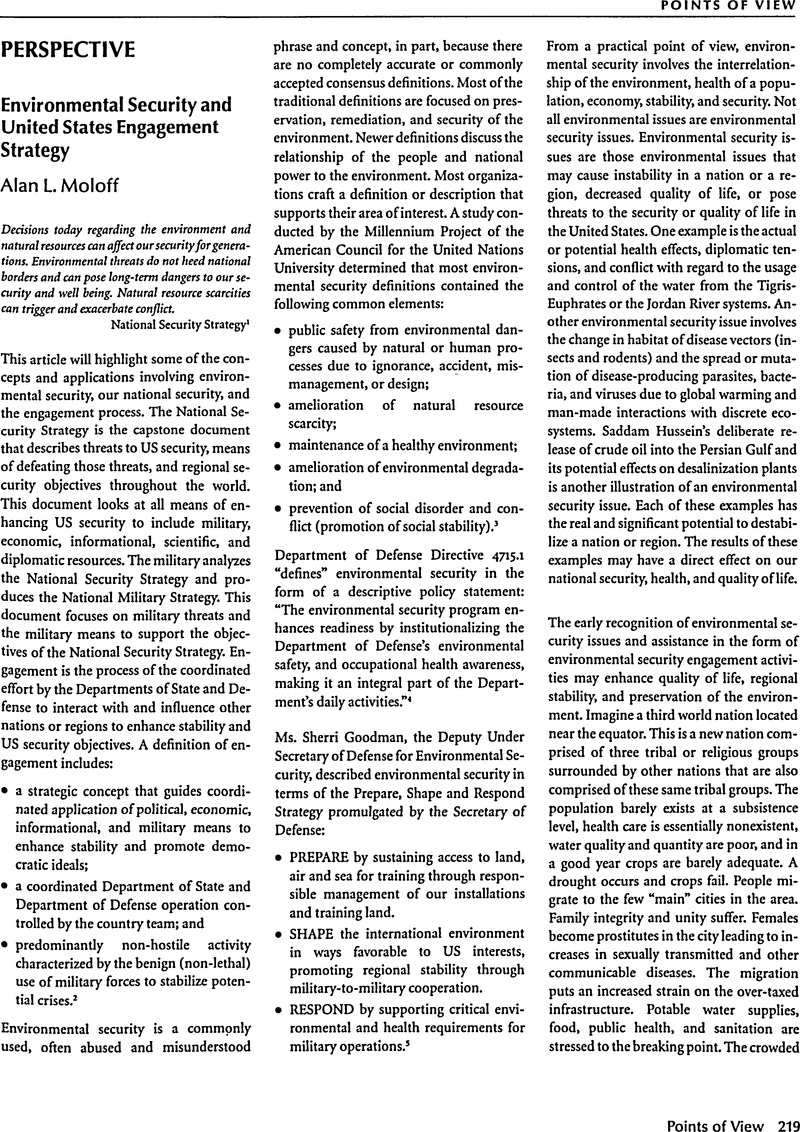No CrossRef data available.
Published online by Cambridge University Press: 13 July 2009

1. Clinton, W. J., 1998, A National Security Strategy for a New Century, The White House, Washington, DC, 10, p. 13.Google Scholar
2. Ohlinger, B. J., 1992, Peacetime Engagement: A Search for Relevance, Strategic Studies Institute, USAWC, 10 15, pp. 2–3.CrossRefGoogle Scholar
3. Landholm, M., ed., 1998, Defining Environmental Security: Implications for the U.S. Army, AEPI-IFP-1298, Army Environmental Policy Institute, 12, p. iv.Google Scholar
4. US Department of Defense, 1996, Environmental Security, DOD Directive 4715.1, Washington, DC, 02 24.Google Scholar
5. Congress, Senate, Armed Forces Committee. Subcommittee on Readiness and Management Support, Environmental Security In The Next Millennium. 04 13, 1999.Google Scholar
6. Homer-Dixon, T., 1991, “On the Threshold: Environmental Changes as Causes of Acute Conflict.” International Security 16(Fall):76–116.CrossRefGoogle Scholar
7. Butts, K. H., 1997, “The Strategic Importance of Water,” Parameters 17(1):65–83.Google Scholar
8. Kaplan, R. D., 1994, “The Coming Anarchy,” The Atlantic Monthly 273(2):44–76.Google Scholar
9. Schwartz, D. and Singh, A., 1999, “Environmental Conditions, Resources and Conflicts: An Introductory Overview and Data Collection,” United Nations Environmental Program, Nairobi, Kenya.Google Scholar
10. Clinton, , A National Security Strategy for a New Century, p. 1.Google Scholar
11. Asia/Near East, Greater Horn of Africa Initiative, Central/Easter Europe, 1999, US Agency for International Development, http://www.info.usaid.gov/regions/, 09 20.Google Scholar
12. Parra, W., Deputy Director, National Center for Environmental Health, Centers for Disease Control, interviewed by author, 10 7, 1999, Atlanta, GA.Google Scholar